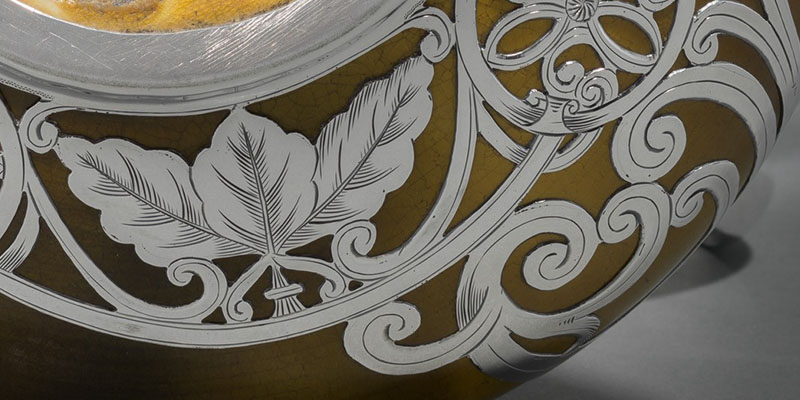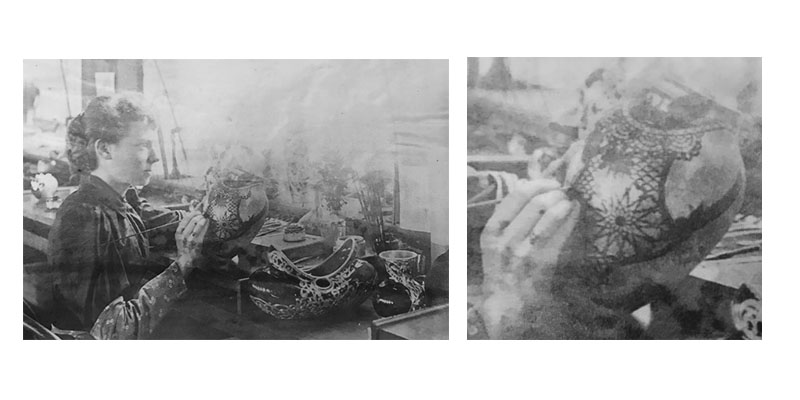- Events & Programs Home
- Calendar
- Accessibility
- Adults
-
Families & Teens
- Families & Teens Home
- 10x10 Teen Art Expo
- Art on the Rise
- Art Together: Art Making for Families with Children Ages 3–5
- Babies Sing with May Festival Minis
- Boy Scouts / Girl Scouts
- CAM Kids Day
- Family Storytime and Gallery Walk
- Family Studio: Art Making for Families with Children Ages 6–12
- Games in the Galleries
- Members-Only Baby Tours
- Public Baby Tours
- REC Reads
- Rosenthal Education Center (REC)
- Saturday Morning Art Class
- See Play Learn Kits
- Summer Camp
- Teen Fest: Zine and Comic Exchange
- RECreate
- Teachers
- Community Outreach
- Fundraisers
- Plan Your Own Event

- Events & Programs Home
- Calendar
- Accessibility
- Adults
-
Families & Teens
- Families & Teens Home
- 10x10 Teen Art Expo
- Art on the Rise
- Art Together: Art Making for Families with Children Ages 3–5
- Babies Sing with May Festival Minis
- Boy Scouts / Girl Scouts
- CAM Kids Day
- Family Storytime and Gallery Walk
- Family Studio: Art Making for Families with Children Ages 6–12
- Games in the Galleries
- Members-Only Baby Tours
- Public Baby Tours
- REC Reads
- Rosenthal Education Center (REC)
- Saturday Morning Art Class
- See Play Learn Kits
- Summer Camp
- Teen Fest: Zine and Comic Exchange
- RECreate
- Teachers
- Community Outreach
- Fundraisers
- Plan Your Own Event
Blog: CAM Uncovered
Blog: CAM Uncovered
- Home
- Plan Your Visit
- Art
-
Events & Programs
- Events & Programs Home
- Calendar
- Accessibility
- Adults
-
Families & Teens
- Families & Teens Home
- 10x10 Teen Art Expo
- Art on the Rise
- Art Together: Art Making for Families with Children Ages 3–5
- Babies Sing with May Festival Minis
- Boy Scouts / Girl Scouts
- CAM Kids Day
- Family Storytime and Gallery Walk
- Family Studio: Art Making for Families with Children Ages 6–12
- Games in the Galleries
- Members-Only Baby Tours
- Public Baby Tours
- REC Reads
- Rosenthal Education Center (REC)
- Saturday Morning Art Class
- See Play Learn Kits
- Summer Camp
- Teen Fest: Zine and Comic Exchange
- RECreate
- Teachers
- Community Outreach
- Fundraisers
- Plan Your Own Event
- Give & Join
- About
- Tickets
- Calendar
- Exhibitions
- Collections
- Blog
- Shop
Extra Brilliant: Gorham Silver Deposit on Rookwood Pottery
by Lea C. Lane, Curatorial Assistant for Decorative Arts and Design
3/24/2020
behind the scenes , Gorham Silver: Designing Brilliance 1850–1970 , Rookwood Pottery Company , Curatorial Blog , Decorative Arts

Detail, engraved silver deposit

Ewer, 1890–1892, The Rookwood Pottery Company (est. 1880), Gorham Manufacturing Company (est. 1831), Kitaro Shirayamadani (1865–1948), ceramic decorator, earthenware, Standard glaze line and silver deposit, William W. Taylor Endowment, 1973.104
Keen-eyed visitors to our current exhibition, Gorham: Designing Brilliance, will notice a familiar Cincinnati name on two of the objects: Rookwood Pottery. On loan from the Museum of Fine Arts Boston is a Rookwood pitcher painted by Constance Amelia Baker, which is displayed alongside a show-stopping Rookwood ewer from the CAM collection, decorated by Kitaro Shirayamadani. These are unlike any of the other Rookwood examples on view in the museum, however: a thin layer of engraved silver curls and wraps around their curves, the work of Gorham Manufacturing Company.
Shaping silver typically requires a great deal of heat and pressure, which makes the graceful overlay of the metal on the fragile ceramic body seem magical. It was applied using a technique known in the period as silver deposit, but commonly referred to today as silver overlay. This is a chemical process that harnesses electric current to attract the metal to the surface of ceramic or glass objects. Gorham was quite open about their method, and never took out a patent.
Here’s how it was done, according to Gorham publications from the period:
- Object is coated in a flux material (which attracts the silver)
- It is immersed in chemical/acid bath containing silver
- Electrical current is applied, silver is attracted to and bonds with the flux coat
- Artists, usually women, draw the design lightly on the silver coated areas
- Artists, usually women, apply a non-conductive, thick varnish on areas that they want the silver to remain in place
- The object is re-immersed into the chemical/acid bath, and electrical current is applied
- The silver not protected by the varnish dissolves into the bath, leaving only the silver under the varnish intact
- The varnish is removed
- The silver deposit is etched and engraved
In step three, the entire object was coated in silver, meaning that the decoration on the Rookwood vessel was completely hidden when the Gorham artist laid out what areas of the metal would remain, and which would be dissolved into the electric acid bath. Given this, it’s remarkable how sensitive the silver deposit designs are to the masked Rookwood decoration (although there are certainly cases where they awkwardly overlap). Early silver deposit tends to dominate one side of the vessel and leave in reserve the portion of the object with the greatest attention to ceramic decoration. The layer of silver that is left at the end of the application process was often further engraved by specialized Gorham craftsmen.

Woman applying resist varnish to a Rookwood vase that is coated with silver deposit (and detail), Women’s Work at the Gorham Manufacturing Company, Plate 1, N.D., Gorham Collection, John Hay Library, Brown University. The dark areas of the resist will protect the silver it covers from the final electrically-charged acid bath. When the resist is removed, the covered silver will be visible as on the completed examples at lower right.

Man engraving silver deposit on a Rookwood ceramic body, Gorham Historical Photobook, circa 1889-1893, Gorham Collection, John Hay Library, Brown University.
The vast Gorham corporate archive is today mainly housed in the John Hay Library at Brown University. From these documents, we know that the first Rookwood object was recorded at Gorham in early September 1892. Many of the ceramics in this initial batch were destined for display at the 1893 World’s Columbian Exposition in Chicago, where Gorham received a gold medal for “silver deposit on glass and American pottery.” They continued to apply silver to Rookwood into the early twentieth century, at least until 1906, the latest known dated ceramic with this treatment. It appears that over 2,500 silver deposited Rookwood objects were produced during this time.
In the period, these silver deposited objects received nearly universal praise. Critics observed how the rich warm tones of the Rookwood complemented the cool shine of the silver. Gorham distributed these objects to leading dealers in fine silver, ceramics and glass, many of which already sold the separate products of Rookwood and Gorham.
It is not clear if Rookwood Pottery itself approved of the embellishment of their wares by Gorham. It does not seem to have been the result of a collaboration, but rather a post-production process in which Rookwood was not directly involved. The pottery may have been purchased outright by Gorham. Discussion of the silver deposit wares is strikingly absent from Rookwood company minutes and letter books but is also absent from their physical record. In 1916, an inventory was taken of the Rookwood pottery that was on loan to the Cincinnati Art Museum. This collection served as a corporate archive for the company, reflecting their experimental and production work. Among the 2,292 pieces, not one object with silver mounts produced by an outside firm was noted. There is also no evidence that Rookwood offered Gorham mounted objects for sale in their show rooms. At the 1893 Columbian Exposition, it was Gorham that exhibited the silver deposited ware, not Rookwood. The pottery did ultimately create an in-house department for mounting their wares in silver, but this was a short lived experiment.
Rookwood pottery with Gorham silver deposit brings together two of the most celebrated makers in late nineteenth-century American ceramics and silver. Gorham Silver: Designing Brilliance, 1850-1970 runs until June 7.
Cincinnati, OH 45202
Toll Free: 1 (877) 472-4226
Museum Hours
Museum Shop
Terrace Café
Library
Cincinnati Art Museum is supported by the tens of thousands of people who give generously to the annual ArtsWave Campaign, the region's primary source for arts funding.

Free general admission to the Cincinnati Art Museum is made possible by a gift from the Rosenthal Family Foundation. Exhibition pricing may vary. Parking at the Cincinnati Art Museum is free.
Generous support for our extended Thursday hours is provided by Art Bridges Foundation’s Access for All program.

General operating support provided by:



